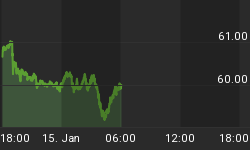Researchers have reduced the preparation time of quantum dot solar cells to less than an hour by changing the form to a one-coat quantum dot solar paint.
How?
Titanium dioxide (TiO2) nanoparticles are coated with cadmium sulfide (CdS) or cadmium selenide (CdSe.) The composite nanoparticles, when mixed with a solvent, form a paste that can be applied as one-step paint to a transparent conducting material, which creates electricity when exposed to light.
Although the paint form is currently about five times less efficient than the highest recorded efficiency for the multifilm form, the researchers predict that its efficiency can be improved, which could lead to a simple and economically viable way to prepare solar cells.
The scientists responsible for the research breakthrough, Mathew P. Genovese of the University of Waterloo in Canada, with Ian V. Lightcap and Prashant V. Kamat of the Radiation Laboratory and Department of Chemistry and Biochemistry at the University of Notre Dame in Indiana, will be publishing their study in an upcoming issue of the American Chemical Society's publication Nano.
During an interview with PhysOrg.com Professor Kamat, John A. Zahm Professor of Science in Chemistry and Biochemistry and an investigator in Notre Dame's Center for Nano Science and Technology (NDnano) and who led the research, explained, "Quantum dots are semiconductor nanocrystals which exhibit size-dependent optical and electronic properties. In a quantum dot sensitized solar cell, the excitation of semiconductor quantum dot or semiconductor nanocrystal is followed by electron injection into TiO2 nanoparticles. These electrons are then transferred to the collecting electrode surface to generate photocurrent.
The holes that remain in the semiconductor quantum dot are removed by a hole conductor or redox couple and are transported to a counter electrode. If we can optimize the paint preparation, it should be possible for anyone to open a bottle (or a can in the long run) and apply it to a conducting surface. This will decrease the variability between lab to lab or person to person as one encounters in a multi-step process. Having fewer fabrication steps and ambient preparative conditions should provide an economically viable transformative technology."
During their research the scientists tested a number of different compounds, but found that a composite of mixed CdS/TiO2 and CdSe/TiO2 nanoparticles performed best, particularly when the CdS and CdSe was deposited directly on the TiO2 nanoparticles as a coating.
Describing their work they said that the nanoparticles were suspended in a water-alcohol mixture to create the binder-free paste, which was then applied to conducting glass surface and annealed at 200 degrees Centigrade. When coated on a glass electrode, the paint has an overall power conversion efficiency exceeding 1 percent. Although some multifilm quantum dot solar cells have efficiencies greater than 5 percent, the scientists believe that using different quantum dots and further optimization could significantly increase the efficiency of the paint.
Potential uses could include painting electronic devices such as cell phones to recharge their batteries, along with larger electrical devices such as computers, while rooftops, windows, and cars could be coated as well.
The scientists' work has attracted some major governmental interest and the Department of Energy's Office of Basic Energy Sciences is funding their research.
Professor Kamat concluded in a Notre Dame press release, "We want to do something transformative, to move beyond current silicon-based solar technology. The best light-to-energy conversion efficiency we've reached so far is one percent, which is well behind the usual 10 to 15 percent efficiency of commercial silicon solar cells. But this paint can be made cheaply and in large quantities. If we can improve the efficiency somewhat, we may be able to make a real difference in meeting energy needs in the future. That's why we've christened the new paint, Sun-Believable."
Source: http://oilprice.com/Alternative-Energy/Solar-Energy/Solar-Breakthrough-Cheap-Quantum-Dot-Solar-Paint.html
By John C.K. Daly of Oilprice.com
















